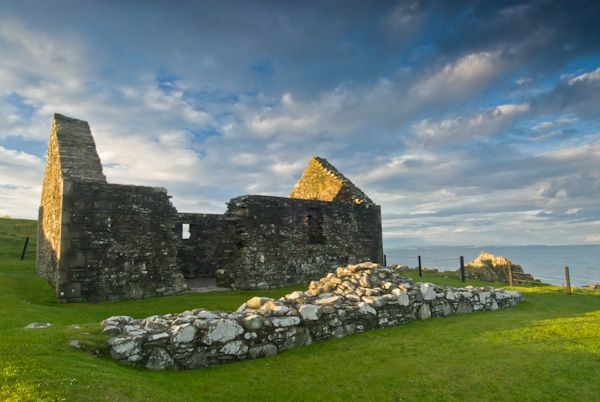St. Ninian is a shadowy figure in history. He is acknowledged as Scotland’s first saint with the date 397AD celebrated as the beginning of his mission to his people.
There is very little that we know about him. No written references to St Ninian from the period he was alive have been found. We can only refer to works written many years after his death. Historians now read these texts carefully trying to separate the truth from tradition and embroidery from fact.
Whithorn’s history as an Early Christian centre cannot be doubted. Archaeologists have uncovered clues from the earliest settlement in the 5th century. The people were trading and importing luxury goods from the Mediterranean and were working the land to produce food together. The Latinus Stone, which is the earliest Christian monument in Scotland shows that the community was Christian. Historically we do know that from the 7th century people have made a pilgrimage to visit the shrine of St Ninian in Whithorn believing in his power to cure illness and perform miracles. The town became a cult centre and over many centuries both kings and commoners made the journey and the fame of Ninian and Whithorn spread.
In the 7th century Whithorn came under the control of the Northumbrian church. In AD731 Bede, a famous historian completed his book “History of the English Church and People”. In this book he said that Ninian was ‘a most reverend bishop and holy man of the nation of Britons’ who had been trained in Rome. The Episcopal see was named after St Martin and his church was known as Candida Casa because it was built from stone in a way unknown to the Britons. At this time there were arguments between the Celtic Church and the Roman Church. The Northumbrian church supported the Roman Church and Bede made much of Ninian receiving training in Rome. The complex of buildings revealed from this time was able to feed and house visitors to the shrine. One of a probable range of churches was also discovered with a burial chapel decorated with stained glass windows.
In the 8th century a Latin poem ‘Miracula Nynie Episcopi’ was written by a monk at the monastery at Whithorn. In the 12th century Ailred of Rievaulx wrote his “Life of St Ninian”. Some stories in the books tell of the life, good works and goodness of the saint and some tell of cures and conversion of people to Christianity. Churches and altars across Scotland and further away in Europe were dedicated to St Ninian.
Archaeology shows that new churches are constantly being built and altered in Whithorn. By the 12th century a huge cathedral was on the hillside with a thriving town around it. The many people visiting the shrine needed food and other trades in the town, much like a visitor to the town today.
It was only after the Reformation that Whithorn’s fortunes began to fail. Pilgrims still visit Whithorn and others come to discover the history of the town and its role in shaping the history of Scotland.
This stained glass window in the Whithorn Story Exhibition by Richard LeClerk is a copy of a Douglas Strachan window in St Margaret’s Chapel, Edinburgh Castle.


